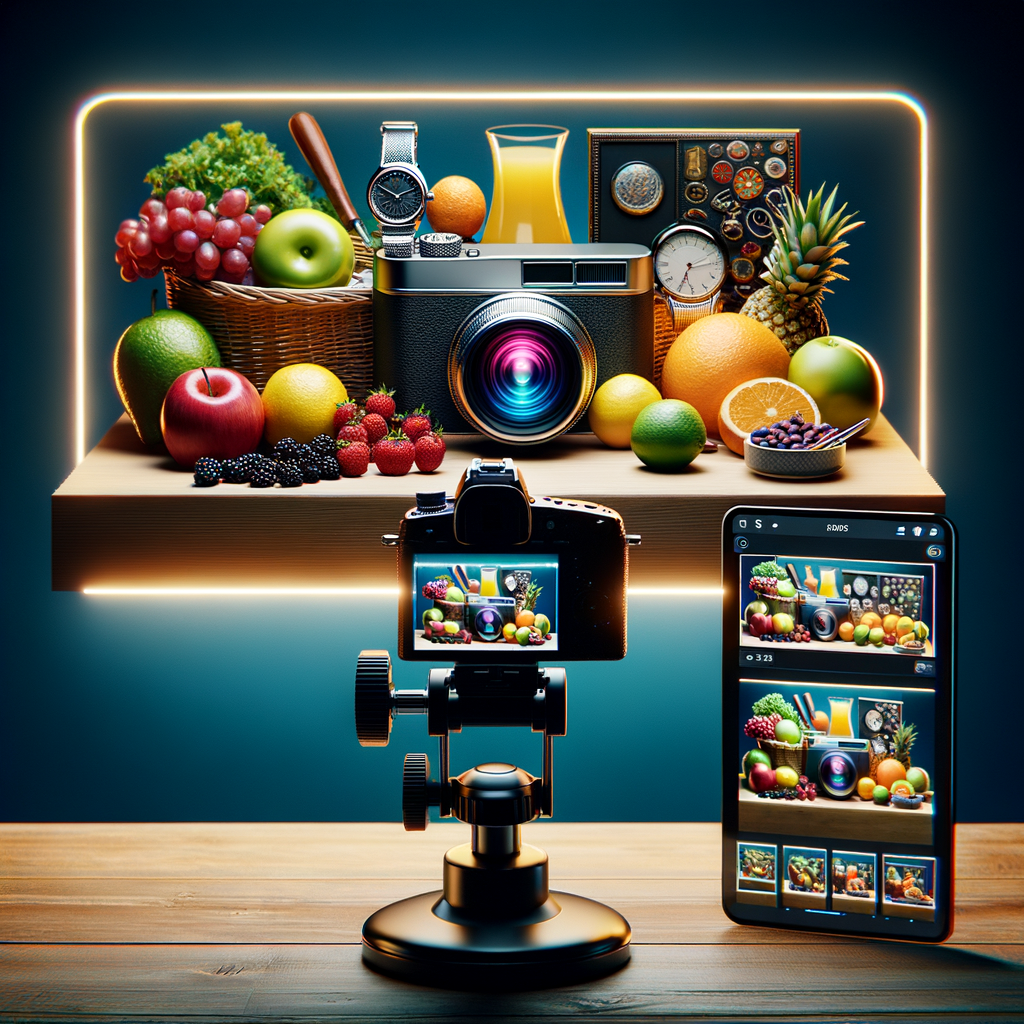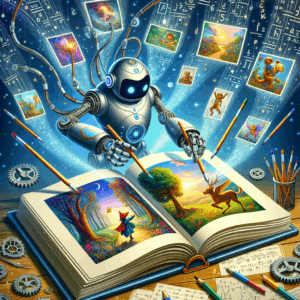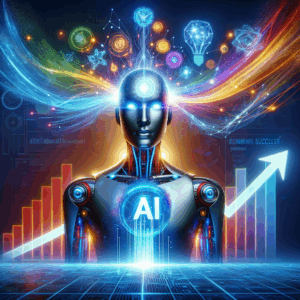
AI In Product Photography Editing: Stunning Results Guaranteed
- Understanding AI in Product Photography Editing
- The Benefits of AI in Product Photography Editing
- Time Efficiency
- Cost-Effective Solutions
- Consistent Quality
- Increased Creativity
- How AI Tools Enhance Editing Processes
- Background Removal
- Color Correction
- Image Retouching
- Batch Editing
- Choosing the Right AI Tools for Your Needs
- Assess Your Needs
- User-Friendly Interface
- Support and Community
- Cost-Effectiveness
- Industry-Specific Use Cases
- E-commerce
- Fashion
- Food and Beverage
- Electronics
- The Future of AI in Product Photography Editing
- Enhanced Personalization
- Smart Recommendations
- Integration with Social Media
- Conclusion
- FAQs
- 1. What are the best AI tools for product photography editing?
- 2. How does AI improve the speed of editing?
- 3. Can I use AI photo editing tools for videos?
- 4. Is AI photography editing worth the investment?
- 5. How do I choose the right AI editing software?
- 6. Will using AI make my images look artificial?
- 7. How do I ensure my images comply with brand aesthetics?
- 8. Can AI handle complex editing tasks?
- 9. Is AI editing suitable for all types of products?
- 10. What’s the future of AI in product photography?
- References
Understanding AI in Product Photography Editing
Artificial Intelligence (AI) is shaking up industries across the globe, and product photography is no exception. It’s hard to ignore the stunning results that AI can achieve when editing photos. With a click of a button, AI transforms average product images into captivating visuals that grab attention. In this blog post, we will explore the mechanics of AI in product photography editing, how it benefits your business, and why it might be the game-changer you’ve been looking for.
AI algorithms analyze images, recognizing specific elements such as colors, shapes, and textures. This capability allows software to offer solutions tailored to your products’ needs. Rather than relying solely on human expertise, businesses now have AI as a tool to enhance their visuals. As a result, AI elevates product photography in ways that were previously unimaginable.
Understanding how AI works in this context is essential. AI tools leverage machine learning and deep learning techniques to refine images. They can automate tasks like background removal, color correction, and image enhancement. This not only saves time but also ensures consistency across your product range. Businesses that utilize AI in editing often report a noticeable improvement in photo quality, which can lead to higher conversion rates.
The Benefits of AI in Product Photography Editing
Utilizing AI in product photography offers numerous benefits that can help businesses flourish. From enhancing image quality to saving time, these advantages cater to various aspects of editing and marketing.
Time Efficiency
One standout benefit of AI editing tools is their speed. Traditional editing processes can be labor-intensive, consuming hours or even days. AI can accomplish complex tasks in just a fraction of the time. For example, removing backgrounds can take minutes instead of hours, allowing companies to focus on other crucial areas of their business.
Cost-Effective Solutions
Investing in high-quality product photography can be expensive, especially when hiring professional photographers or editors. AI tools present a cost-effective alternative. Many AI editing software options are affordable, making them accessible for businesses of all sizes. By reducing the need for extensive manpower, companies can redirect funds to other vital parts of their operations.
Consistent Quality
Inconsistent photo quality can tarnish a brand’s image. AI addresses this issue by applying uniform enhancements across all photos. With advanced algorithms, AI ensures that each product appears similarly appealing, establishing a coherent visual identity. This uniformity boosts brand recognition and customer trust.
Increased Creativity
While AI may be a tool, it doesn’t stifle creativity; it enhances it. With basic editing tasks automated, photographers can focus on exploring creative angles, lighting, and compositions. You might find unforeseen possibilities that you would not have considered otherwise. The synergy between human creativity and AI efficiency results in exceptional images.
How AI Tools Enhance Editing Processes
The power of AI lies in its ability to enhance various editing processes seamlessly. Let’s breakdown some of the specific processes that AI can improve:
Background Removal
One of the most common tasks in product photography is background removal. With AI, this process becomes almost instantaneous. Many tools can identify the subject in the image and cleanly remove the background. Whether you need a simple white background or a more elaborate environment, AI delivers precision and speed.
Color Correction
Colors can appear differently depending on lighting conditions and camera settings. AI tools analyze photos and adjust color levels automatically. This ensures that the product appears as true to life as possible. You can retain your product’s original colors, which is vital for maintaining customer expectations.
Image Retouching
Retouching can make a world of difference. AI tools enable quick adjustments to shadows, highlights, and skin imperfections on product images. These enhancements allow products to shine without losing their authenticity. As a result, customers feel more confident when deciding to purchase.
Batch Editing
Manual editing for multiple images is tedious and time-consuming. AI tools allow you to edit thousands of images simultaneously, applying the same enhancements across various photos. This feature is particularly useful for e-commerce platforms with extensive product lines.
Choosing the Right AI Tools for Your Needs
The market is laden with AI photo editing tools, each with its own unique set of features. When selecting the right one for your business, consider a few factors that can impact your decision and results.
Assess Your Needs
Take a moment to evaluate your specific requirements. Do you need background removal, color correction, or simply batch editing? Having a clear understanding of your needs will guide your tool selection process.
User-Friendly Interface
An intuitive interface is crucial for effective use. Most teams might not have extensive expertise in photo editing. Therefore, choosing AI tools with a user-friendly layout can save time in training. User reviews can offer valuable insights into an application’s ease of use.
Support and Community
Support and community can often be overlooked features when considering software. Look for tools with excellent customer service. Many editing tools come with forums or community support, helping you solve any questions quickly.
Cost-Effectiveness
Pricing models vary significantly among AI tools. Compare several options to find one that fits your budget. Some tools operate on a subscription model, while others may offer one-time payments. Assess not only the cost but also the features you get for that price.
Industry-Specific Use Cases
While AI in product photography can benefit a wide array of industries, let’s explore how it particularly suits different sectors.
E-commerce
For e-commerce platforms, high-quality product images are essential. AI enhances features like background removal and batch processing, which is invaluable for retailers showcasing multiple products.
Fashion
Fashion retailers thrive on visuals. AI tools can automate tasks like skin tone correction and color brightness to ensure models and outfits pop. The result attracts potential customers effectively.
Food and Beverage
High-quality food photography is crucial for restaurants and food brands. AI tools can enhance textures and colors to make food appear more appetizing. With the right tools, your food images can entice clients.
Electronics
For electronics sellers, showcasing intricate details can set a brand apart. AI can enhance macro photography to capture clarity and sharpness, ensuring potential customers get a detailed view of what they’re purchasing.
The Future of AI in Product Photography Editing
AI is already making waves, but its evolution is just beginning. The future holds promising advancements that could redefine product photography. Emerging technologies like augmented reality (AR) and virtual reality (VR) will likely integrate with AI solutions, making it even easier to create stunning product images.
Enhanced Personalization
As AI evolves, so will its capacity for personalization. Imagine changing the color of a product within an image or adjusting it to suit individual tastes in real-time. Enhanced customization could lead to a more engaging shopping experience.
Smart Recommendations
Advanced AI algorithms might offer suggestions based on historical data. For example, if certain styles or colors are trending, the AI could recommend those in your product images. It adds another layer of intelligence to marketing strategies.
Integration with Social Media
With the ever-growing significance of social media in marketing, AI could streamline the process of adapting images for various platforms. Integrated tools might automatically optimize images according to the best practices of each social media outlet.
Conclusion
AI has transformed product photography editing in remarkable ways. From enhancing image quality to streamlining processes, it fuels business efficiency and creativity. Whether you’re running a small e-commerce site or a large retail operation, implementing AI can elevate your visuals and, ultimately, drive sales.
The future promises even more advancements, pushing the boundaries of what we can achieve with product photography. With AI on your side, stunning results are not just a possibility; they’re a guarantee.
FAQs
1. What are the best AI tools for product photography editing?
Popular choices include Adobe Photoshop with AI features, Remove.bg for background removal, and Luminar AI for intelligent enhancements.
2. How does AI improve the speed of editing?
AI automates repetitive tasks like background removal and color correction, reducing the time spent per photo significantly.
3. Can I use AI photo editing tools for videos?
Many AI photo editing tools specialize in images, but some platforms offer video enhancements. Check for dedicated video editing features.
4. Is AI photography editing worth the investment?
Yes! The time and cost savings, along with enhanced image quality, often outweigh the initial investment in AI tools.
5. How do I choose the right AI editing software?
Assess your specific needs, ease of use, community support, and cost-effectiveness to find the best tool.
6. Will using AI make my images look artificial?
Not necessarily. High-quality AI tools enhance features while preserving the product’s authenticity.
7. How do I ensure my images comply with brand aesthetics?
Many AI tools allow you to set specific standards for color and style, ensuring compliance with your brand guidelines.
8. Can AI handle complex editing tasks?
While AI excels at many tasks, some complex adjustments may still require professional editing skills.
9. Is AI editing suitable for all types of products?
Yes, AI editing can cater to various types of products, from fashion to electronics, and even food photography.
10. What’s the future of AI in product photography?
The future holds possibilities like enhanced personalization, smart recommendations, and better integration with social platforms.
References
1. Adobe
2. Remove.bg
3. Luminar AI
4. Petapixel – The Impact of AI on Photography

